Database of luminescent minerals
ANHYDRITE
Chemical formula: CaSO4
Family: Sulfates
Status: IMA-GP
Crystal system : Orthorhombic
Display mineral: NON
Luminescence:
Longwave UV (365nm) colors: |
Pink , White , Bluish White , Blue , Bluish , | ||
Intensity LW:Weak | |||
Shortwave UV (254nm) colors: |
Red , White , Bluish White , Blue , Bluish , | ||
Intensity SW:Weak | |||
Do you have a photo of this mineral you would like to see in the gallery? Contact us!
Phosphorescence (in the common sense of the term) observable with the naked eye:
No data
Thermoluminescence: OUI
Activator(s) and spectrum:
Activator(s): Sm2+, S2-, Eu2+, Ce3+, Eu3+, Dy3+, Tb3+, Mn2+ , O*, Nd3+, Yb2+,
Peaks in the spectrum (nm):
Mn2+II, NOT repl. Ca2+: 600-630nm
O2- repl. [SO4]2-: 400-500nm
S2-: 500-600nm (in N-liquid)
Ce3+: 320, 340nm
Eu2+: 385nm
Tb3+: 416, 438nm
Dy3+: 475, 478, 480, 546, 574, 577, 582nm
Sm2+: 630, 632, 633, 637, 640, 680, 687, 689, 690, 693, 696, 699, 700, 703, 704, 706, 706, 708, 727, 732, 735, 740, 744, 745, 748, 765, 766, 767, 769, 777, 782, 818, 820, 821, 832nm
Nd3+: 838, 839, 892, 899nm
Eu3+: 593, 618, 691, 702nm
Yb2+: 525nm
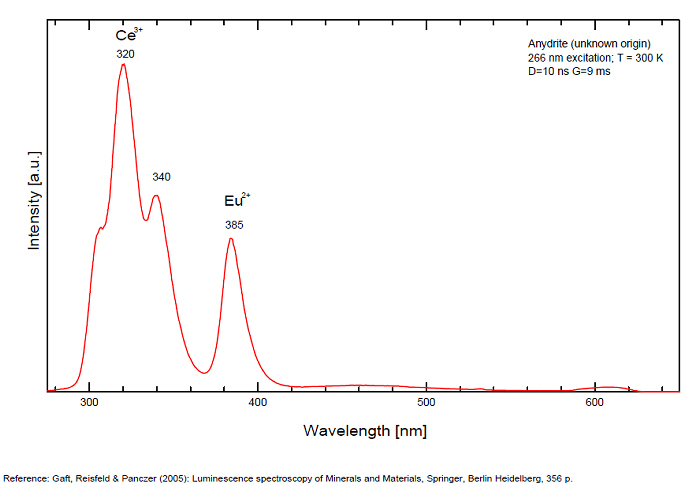
Spectrum: Michael Gaft, Petah Tikva, Israel. Plot: Institute of Mineralogy, University of Vienna, Austria, with permission of the authors.
Spectrum Galery:
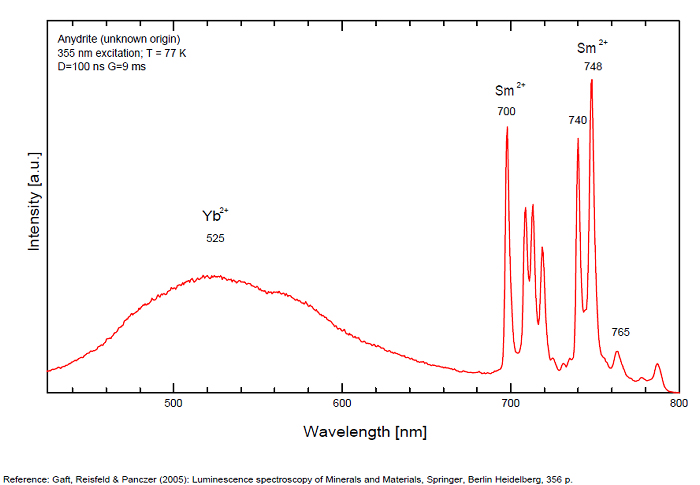
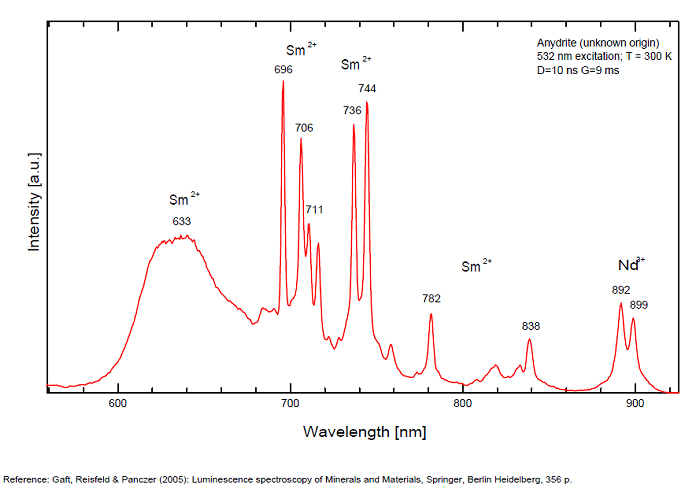
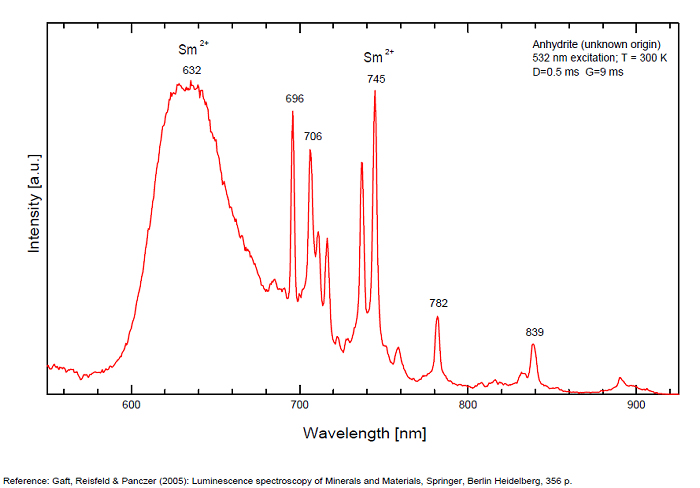
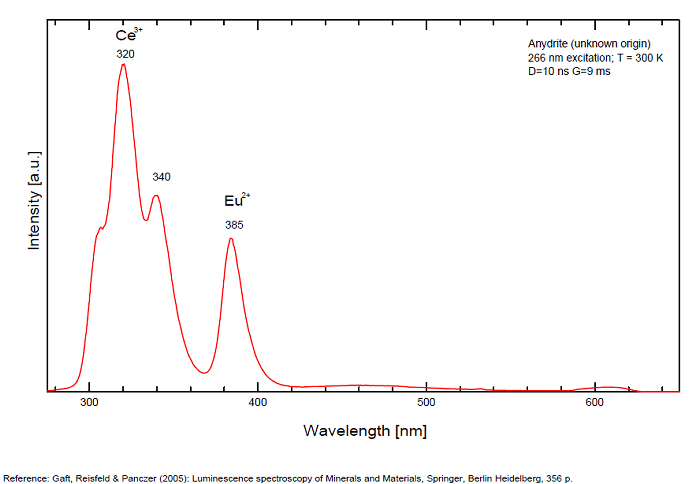 ...
...Comments on spectrum and activators:
Activator: Mn2+ or REE substituted to Ca (Gaft); O-2 (Gorobets);
Best localities for fluorescence (*):
- Naica, Mun. de Saucillo, Chihuahua, Mexico (weak white SW and LW, sometime blue SW with calcite red SW);
- Hanover, Lower Saxony, Germany (red LW);
(*)The data are not exhaustive and are limited to a few remarkable localities for fluorescence
Bibliographic reference for luminescence:
- The Henkel Glossary of Fluorescent Minerals, Dr. Gerhard Henkel, Published by the FMS, 1989 ,
- Fluorescence: Gems and Minerals Under Ultraviolet Light, Manuel Robbins, 1994, Geoscience Press, ISBN 0-945005-13-X ,
- Luminescence Spectroscopy of Minerals and Materials, M. Gaft, R. Reisfeld, G. Panczer, Springer Editor, ISBN: 10 3-540-21918-8 ,
- Luminescent Spectra of Minerals, Boris S. Gorobets and Alexandre A. Rogojine, Moscow, 2002 ,
Mineralogical reference on the Internet:
 http://www.mindat.org/show.php?name=Anhydrite
http://www.mindat.org/show.php?name=Anhydrite
 http://webmineral.com/data/Anhydrite.shtml
http://webmineral.com/data/Anhydrite.shtml
Internet Search:
 Image search on 'Google Images'
Image search on 'Google Images'
 Search for documents in all languages on Google
Search for documents in all languages on Google
A request providing no result means only that no such reference exists in the database, but it does not mean that what you are looking for does not exist, just not to our knowledge. If you think you have found an error or omission, please let us know via the contact page being sure to cite the source of information.

